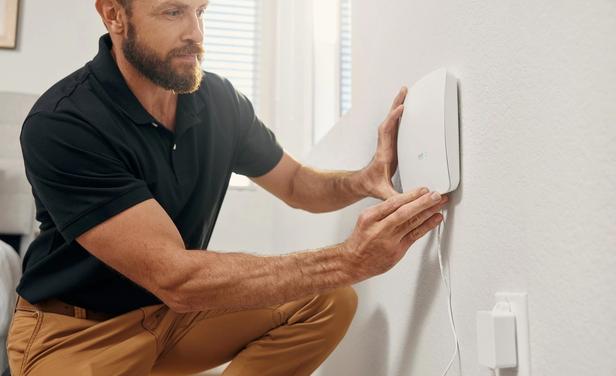Subscribe to our newsletter
Smart home technology is rapidly evolving, and Z-Wave hubs have become essential for residents looking to streamline and automate their devices. Whether you’re setting up a new smart home or upgrading an existing community, choosing the right Z-Wave hub can make all the difference.
This guide covers everything you need to know, from functionality and benefits to how to choose the best hub for your needs.
What is a Z-Wave hub?
A Z-Wave hub is the central command center for all Z-Wave-enabled devices in a smart home. It allows different devices—such as smart locks, lights, thermostats and sensors—to communicate seamlessly. By acting as a bridge between these devices and the user, a Z-Wave hub enables remote control, automation and real-time monitoring via a smartphone app or web-based dashboard.
Unlike wifi or Bluetooth, Z-Wave operates on a dedicated low-frequency band (typically 900 MHz), reducing interference and providing a more stable connection. Additionally, Z-Wave uses a mesh network, meaning devices relay signals to one another, extending the range and reliability of the network. This ensures strong connectivity even in larger homes.

Why use a Z-Wave hub?
A Z-Wave hub simplifies smart home automation with key benefits like:
Enhanced interoperability – Z-Wave hubs support devices from multiple manufacturers, ensuring compatibility across various brands.
Reliable and secure connections – The Z-Wave protocol is designed for low power consumption and strong encryption, making it a safe and efficient choice for home automation.
Simplified automation – Users can create automated routines, such as turning off all lights when leaving or adjusting the thermostat based on occupancy.
Remote access and control – With a Z-Wave hub, users can monitor and control their smart home devices from anywhere using a mobile app.
Energy efficiency – Many Z-Wave hubs integrate with energy-saving devices, allowing residents to optimize energy use and reduce utility costs.
Scalability – Z-Wave hubs make it easy to expand a smart home system over time, adding new devices without compatibility issues.
Key components of a Z-Wave hub
A Z-Wave hub consists of several critical components that enable smooth operation:
✅ Z-Wave radio module
This component is responsible for sending and receiving Z-Wave signals, ensuring seamless communication between connected devices. A high-quality Z-Wave radio module ensures greater signal strength and reliability, making it easier to control devices throughout the home. The radio module also helps maintain the integrity of the mesh network, so devices remain connected even if one device fails.
✅ Processing unit
The hub’s microcontroller executes commands, manages automation rules and ensures efficient operation. Faster processors enhance the speed of automation routines and improve user experience. Advanced hubs may feature dual-core processors or additional memory to handle a high number of connected devices without lag or slow response times.
✅ Power source
Most hubs are powered by an AC adapter, though some feature battery backups for continued operation during power outages. Battery-powered options provide additional reliability during emergencies. Some models also feature energy-efficient designs to minimize power consumption while maintaining optimal performance.
✅ User interface
Hubs typically include a smartphone app or web dashboard for easy setup, control and monitoring. User-friendly interfaces simplify device management, making smart home automation accessible to beginners and experts alike. Some hubs offer customizable dashboards to allow users to tailor their interface based on their most-used devices and automation routines.
✅ Integration and compatibility
A Z-Wave hub integrates with various smart home devices, providing users with centralized control over lighting, security, HVAC and more. Some advanced hubs even support voice assistants like Amazon Alexa (https://alexa.amazon.com/) and Google Assistant (https://assistant.google.com/). Compatibility with third-party apps and cloud services can further enhance the hub’s capabilities, making it a seamless part of a larger smart home ecosystem.
Choosing the best Z-Wave hub for your home
When selecting a Z-Wave hub, consider the following factors:
✅ Device compatibility
Ensure the hub supports the specific Z-Wave devices you plan to use. Some hubs also offer compatibility with Zigbee, Wi-Fi or Bluetooth devices for added flexibility. Checking manufacturer specifications and user reviews can help ensure smooth integration.
✅ Range and coverage
Z-Wave’s mesh network extends coverage, but selecting a hub with strong signal capabilities is crucial for larger homes. If necessary, consider using Z-Wave repeaters to enhance connectivity. Strategic placement of devices throughout the home can also improve network stability.
✅ Ease of setup
Look for a hub with a user-friendly interface, intuitive app and clear installation instructions. Some hubs offer guided setup processes, reducing the learning curve for new users. Additional support features, such as troubleshooting guides and customer support, can also be helpful.
✅ Automation features
Advanced hubs allow users to create custom automation routines, enhancing convenience and efficiency. Look for options that support multi-device interactions, scheduling and real-time triggers. Some hubs offer AI-driven automation that learns user preferences over time to improve performance.
✅ Security and privacy
Opt for a hub with robust encryption and secure cloud storage to protect user data and prevent unauthorized access. Regular firmware updates are also essential for maintaining security. Choosing a hub with two-factor authentication (2FA) can add an extra layer of protection against cyber threats.
✅ Price and value
Consider your budget and compare features to find the best hub for your needs without overpaying. While premium hubs offer advanced features, mid-range options can provide great value for everyday smart home needs. Evaluating customer reviews and industry comparisons can help you find a hub that offers the best balance of performance and affordability.
Future-proofing your smart home
As smart home technology advances, ensuring your Z-Wave hub remains relevant is crucial. Choose hubs that offer firmware updates, backward compatibility and expansion capabilities. Investing in a hub with strong manufacturer support ensures long-term adaptability as your needs evolve.
How firmware updates improve longevity
Firmware updates help keep Z-Wave hubs secure and compatible with new smart home devices. Manufacturers frequently release updates that enhance performance, fix security vulnerabilities and add new automation features. Regularly updating your hub ensures it stays ahead of evolving technology and cyber threats.
Avoiding outdated hubs
Some older hubs may lose manufacturer support over time, making them incompatible with new devices or limiting their functionality. When choosing a hub, research its history of updates and long-term support to avoid needing a replacement too soon.

Final thoughts on choosing a Z-Wave hub
A Z-Wave hub is an essential component of a smart home, providing centralized control, automation and enhanced security. By choosing the right hub and optimizing its setup, residents can enjoy a seamless and efficient smart home experience. With the right hub in place, managing smart devices becomes easier, more efficient and more secure.
Ready to upgrade your smart home? Explore SmartRent’s smart home solutions and book a demo today to discover the best technology for your needs.

